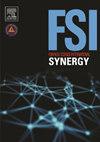The invisible crisis facing forensic providers in the United States
Q1 Social Sciences
引用次数: 0
Abstract
There is a dissonance between the public perception of forensic practice in the United States and reality. Portrayed as infallible and universally available, the truth is that the awkward evolution of forensic practice has created fissures in its foundations, affecting both the quality and quantity of these critical services. These fissures have only widened over time, creating problems that require creative solutions.
Within the United States, every level of government provides forensic services, and there is no overarching authority over forensic providers. The recent reevaluation of the Chevron deference doctrine by the Supreme Court ensures that this is unlikely to change in the foreseeable future. Under Chevron deference, courts would defer to regulatory agencies interpretations when laws were ambiguous. This new ruling transfers that responsibility back to the courts, making the creation of a new regulatory agency over forensic providers even less likely. Thus, any meaningful change to forensic practice must come from within the profession. As unlikely as this may seem, it has occurred before.
This perspective allows us to see the hidden challenges forensic providers face and propose potential solutions that practitioners can implement to increase the quality of their work and the resilience of the system they operate within. By evaluating how forensic practice has implemented change in the past, this paper proposes solutions that have worked before and expands on others from different industries with similar challenges.
美国法医服务提供者面临的无形危机
在美国,公众对法医实践的认知与现实之间存在着不协调。被描绘成绝对可靠和普遍可用的事实是,法医实践的尴尬演变在其基础上造成了裂缝,影响了这些关键服务的质量和数量。随着时间的推移,这些裂痕只会扩大,产生需要创造性解决方案的问题。在美国,各级政府都提供法医服务,对法医提供者没有最高权威。最近最高法院对雪佛龙服从原则的重新评估,确保了这一点在可预见的未来不太可能改变。根据雪佛龙的说法,当法律模棱两可时,法院将服从监管机构的解释。这项新的裁决将责任转移回法院,使得建立一个新的监管机构来监管法医提供者的可能性更小。因此,对法医实践的任何有意义的改变都必须来自专业内部。尽管这看起来不太可能,但以前就发生过。这一视角使我们能够看到司法鉴定提供者面临的潜在挑战,并提出从业者可以实施的潜在解决方案,以提高他们的工作质量和他们所处系统的弹性。通过评估取证实践在过去是如何实施变革的,本文提出了以前有效的解决方案,并扩展到其他面临类似挑战的不同行业。
本文章由计算机程序翻译,如有差异,请以英文原文为准。
求助全文
约1分钟内获得全文
求助全文
来源期刊

Forensic Science International: Synergy
Social Sciences-Law
CiteScore
4.90
自引率
0.00%
发文量
75
审稿时长
90 days
 求助内容:
求助内容: 应助结果提醒方式:
应助结果提醒方式:


